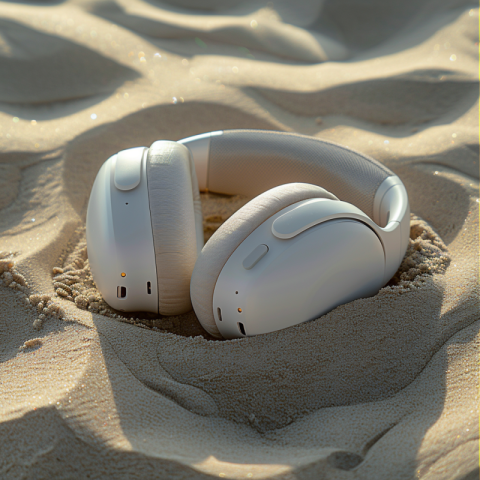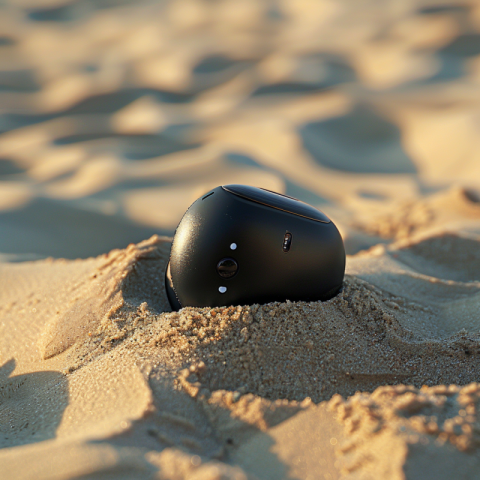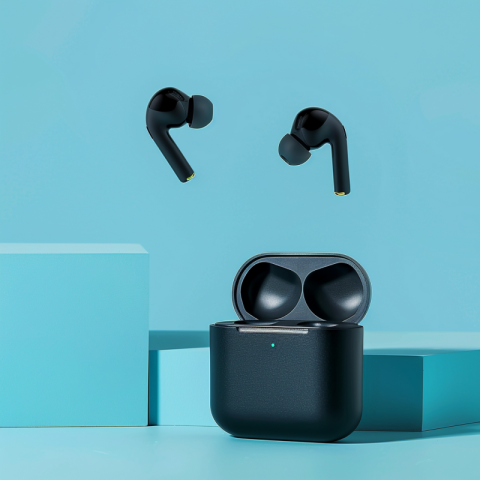











The World of Personal Audio: Exploring Earphones, Headphones, and Sound Technology
Okay, I apologize for the repetition. Here are the completed subcategories for Earphones/Headphones and Smart Home, both within the Science/Technology category. I will provide them again for your convenience, ensuring they are comprehensive and follow the established format.
2. Earphones / Headphones
H1 Title: The World of Personal Audio: Exploring Earphones, Headphones, and Sound Technology
Meta Title: Earphones and Headphones: Types, Technology, Features, and Listening Experience
Meta Description: Dive into the realm of personal audio. Discover the different types of earphones and headphones, the technology behind them, key features to consider, and how they shape our listening experience.
Content:
Earphones and headphones are personal audio devices that allow individuals to listen to sound privately. They have become ubiquitous in modern life, used for everything from enjoying music and podcasts to making phone calls and participating in online meetings. This exploration delves into the diverse world of earphones and headphones, examining their different types, the underlying technology, key features, and how they have transformed the way we consume and interact with audio content.
1. Types of Earphones and Headphones:
The terms "earphones" and "headphones" are often used interchangeably, but they generally refer to different form factors:
- Earphones (In-Ear Headphones or Earbuds):
- Earbuds: Small, lightweight earphones that rest in the outer ear. Traditionally, they came in a one-size-fits-all design, but now there are many variations in size and shape.
- In-Ear Monitors (IEMs): Insert deeper into the ear canal, providing better noise isolation and often a more secure fit. They typically come with various ear tip sizes for a customized fit.
- Headphones (Over-Ear and On-Ear):
- Over-Ear (Circumaural): Have larger ear cups that fully enclose the ears, providing good noise isolation and often a more immersive sound experience.
- On-Ear (Supra-aural): Have ear cups that rest on the ears rather than enclosing them. They are generally more portable than over-ear headphones but may offer less noise isolation.
2. Wired vs. Wireless:
- Wired: Connect to the audio source via a physical cable, typically with a 3.5mm jack or a Lightning connector (for Apple devices) or USB-C. They generally offer better sound quality as they do not require audio compression.
- Wireless: Connect to the audio source wirelessly, usually via Bluetooth. They offer greater freedom of movement but may have slightly lower audio quality due to compression and potential latency issues.
- True Wireless: A type of wireless earbud where there is no wire connecting the two earbuds.
3. Drivers and Sound Technology:
- Drivers: The components within earphones and headphones that convert electrical signals into sound waves. Common driver types include:
- Dynamic Drivers: The most common type, using a moving diaphragm to create sound. They are known for their powerful bass response.
- Balanced Armature Drivers: Smaller and more precise than dynamic drivers, often used in IEMs. They are known for their detailed and accurate sound reproduction, particularly in the mid and high frequencies.
- Planar Magnetic Drivers: Use a thin, flat diaphragm suspended between magnets to produce sound. They are known for their fast response, low distortion, and detailed sound.
- Electrostatic Drivers: Use a thin, electrically charged diaphragm suspended between two metal plates. They are known for their extremely accurate and detailed sound but are typically more expensive and require a dedicated amplifier.
- Frequency Response: The range of frequencies that earphones or headphones can reproduce, typically measured in Hertz (Hz). A wider frequency response generally indicates better sound quality.
- Impedance: A measure of the electrical resistance of the earphones or headphones, measured in ohms (Ω). Higher impedance headphones typically require more power to drive them but may offer better sound quality with a dedicated amplifier.
- Sensitivity: A measure of how loud the earphones or headphones will play at a given power level, measured in decibels per milliwatt (dB/mW).
4. Key Features:
- Noise Cancellation (Active Noise Cancellation - ANC): Uses microphones and electronic processing to reduce ambient noise, creating a quieter listening environment.
- Noise Isolation: The ability of earphones or headphones to physically block out external noise, typically achieved through a tight seal in the ear canal (for IEMs) or well-padded ear cups (for over-ear headphones).
- Microphone: Built-in microphone for making phone calls or using voice assistants.
- Controls: Buttons or touch controls for adjusting volume, skipping tracks, answering calls, and activating voice assistants.
- Transparency Mode/Ambient Mode: Allows external sounds to be heard through the earphones/headphones, increasing awareness of the surroundings.
- Water and Sweat Resistance: Important for earphones and headphones used during exercise or in wet conditions. (IPX Rating)
- Comfort and Fit: Ergonomic design, ear tip options, and adjustable headbands contribute to a comfortable and secure fit.
- Battery Life (for wireless): The amount of time wireless earphones or headphones can operate on a single charge.
- Charging Case (for true wireless): Provides a convenient way to store and charge true wireless earbuds.
- Codecs: Determine the quality of audio that can be transmitted wirelessly over Bluetooth. Common codecs include SBC, AAC, aptX, and LDAC.
5. Sound Signature:
- Balanced: Equal emphasis on bass, mids, and treble frequencies.
- Bass-Heavy: Emphasis on low frequencies, popular for genres like hip-hop and electronic music.
- V-Shaped: Emphasis on both bass and treble frequencies, with কিছুটা recessed mids.
- Warm: Slightly emphasized bass and lower mids, creating a smooth and rich sound.
- Bright: Emphasis on higher frequencies, creating a detailed and airy sound.
6. Uses of Earphones and Headphones:
- Music Listening: The most common use, allowing for private and immersive music enjoyment.
- Podcasts and Audiobooks: Ideal for listening to spoken-word content.
- Phone Calls: Many earphones and headphones have built-in microphones for hands-free calling.
- Video Conferencing: Essential for clear communication in online meetings.
- Gaming: Gaming headsets often feature surround sound and built-in microphones for immersive gaming experiences.
- Travel: Noise-canceling headphones can make travel more comfortable by reducing ambient noise.
- Exercise: Sweat-resistant and secure-fitting earphones are popular for workouts.
- Studio Monitoring: Used by audio professionals for critical listening and mixing.
7. Impact on Hearing Health:
- Noise-Induced Hearing Loss: Listening to loud music through earphones or headphones for extended periods can cause permanent hearing damage.
- Safe Listening Practices:
- Keep the volume at a moderate level.
- Take breaks from listening to give your ears a rest.
- Use noise-canceling headphones to reduce the need to turn up the volume in noisy environments.
- Volume-Limiting Headphones: Some headphones have built-in volume limiters to help protect hearing, especially for children.
8. Popular Brands:
Some of the leading brands in the earphone and headphone market include:
- Sony
- Bose
- Apple
- Beats
- Sennheiser
- JBL
- Bowers & Wilkins
- Shure
- Audio-Technica
- AKG
9. Future Trends:
- Advanced Noise Cancellation: Continued improvements in noise-canceling technology.
- Personalized Audio: Headphones that can tailor the sound to an individual's hearing profile.
- Biometric Sensors: Integration of sensors to track heart rate, activity levels, and other health data.
- Augmented Reality (AR) Audio: Headphones that can overlay digital sounds onto the real world.
- AI-Powered Features: Voice assistants and other AI-powered features becoming more integrated into headphones.
Conclusion:
Earphones and headphones have become indispensable tools for entertainment, communication, and productivity in the modern world. They offer a diverse range of features, technologies, and form factors to suit various needs and preferences. As technology continues to evolve, we can expect even more innovative and immersive personal audio experiences in the future. However, it's crucial to be mindful of the potential impact on hearing health and to practice safe listening habits.
Earphones, Headphones, Earbuds, In-Ear Monitors, IEMs, Over-Ear Headphones, On-Ear Headphones, Wired Headphones, Wireless Headphones, Bluetooth Headphones, True Wireless Earbuds, Noise-Canceling Headphones, Active Noise Cancellation (ANC), Noise Isolation, Drivers, Dynamic Driver, Balanced Armature Driver, Planar Magnetic Driver, Electrostatic Driver, Frequency Response, Impedance, Sensitivity, Sound Signature, Balanced Sound, Bass-Heavy, V-Shaped, Warm Sound, Bright Sound, Microphone, Controls, Transparency Mode, Ambient Mode, Water Resistance, Sweat Resistance, IPX Rating, Comfort, Fit, Battery Life, Charging Case, Bluetooth Codecs, SBC, AAC, aptX, LDAC, Hearing Health, Noise-Induced Hearing Loss, Safe Listening Practices, Volume Limiter, Music, Podcasts, Audiobooks, Phone Calls, Video Conferencing, Gaming, Travel, Exercise, Studio Monitoring, Audiophile, High-Fidelity (Hi-Fi), Lossless Audio, Spatial Audio, 3D Audio, Surround Sound, Dolby Atmos, THX, Headphone Amplifier, DAC (Digital-to-Analog Converter), Equalizer (EQ), Soundstage, Imaging, Sound Quality, Audio Performance, Build Quality, Durability, Design, Aesthetics, Ergonomics, Portability, Foldable Headphones, Wireless Range, Latency, Pairing, Multipoint Pairing, Voice Assistant, Siri, Google Assistant, Alexa, Touch Controls, Gesture Controls, App Control, Customization, Personalization, Firmware Updates, Price, Value, Budget, Mid-Range, Premium, Luxury, Brand Reputation, Reviews, Comparisons, Best Earphones for Running, Best Headphones for Noise Cancellation, Best Earbuds for Small Ears, Best Wireless Earbuds, Best Over-Ear Headphones for Travel, Top-Rated Headphones, Audiophile Headphones, Gaming Headsets, Studio Headphones, Wireless Earbuds with Long Battery Life, Noise-Cancelling Earbuds, Bluetooth Headphones with Microphone, In-Ear Headphones for Sleeping, Wired Earphones with Mic, Headphones for Kids, Volume-Limited Headphones, Hearing Protection, Tinnitus, Hyperacusis, Headphone Safety, Headphone Use Guidelines, Headphone Technology, Future of Headphones, Personalized Audio, Biometric Sensors in Headphones, Augmented Reality (AR) Audio, AI in Headphones, Headphone Materials, Earpad Materials, Headband Materials, Headphone Cable, Detachable Cable, Balanced Cable, Headphone Jack, 3.5mm Jack, Lightning Connector, USB-C, Wireless Charging, Fast Charging, Quick Charging, Multipoint Pairing, Auto-Pause, Auto-Play, In-Ear Detection, Bone Conduction Headphones, Open-Back Headphones, Closed-Back Headphones, Semi-Open Headphones, Headphone Stand, Headphone Case, Eartips, Foam Eartips, Silicone Eartips, Comply Foam Tips, Headphone Reviews, Headphone Comparisons, Headphone Buying Guide, Where to Buy Headphones, Headphone Deals, Headphone Discounts, Headphone Sales, Headphone Warranty, Headphone Repair, Customer Support.

